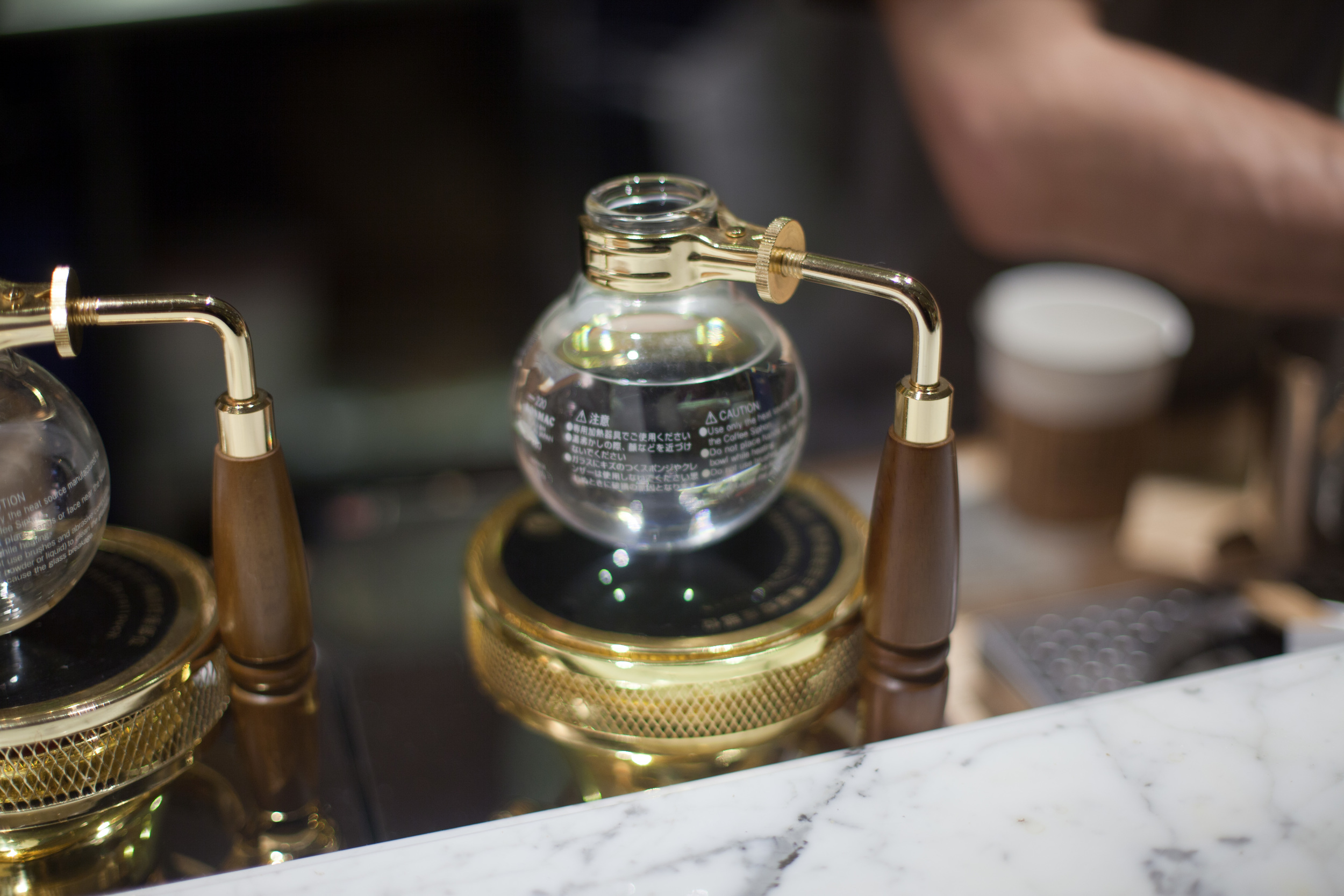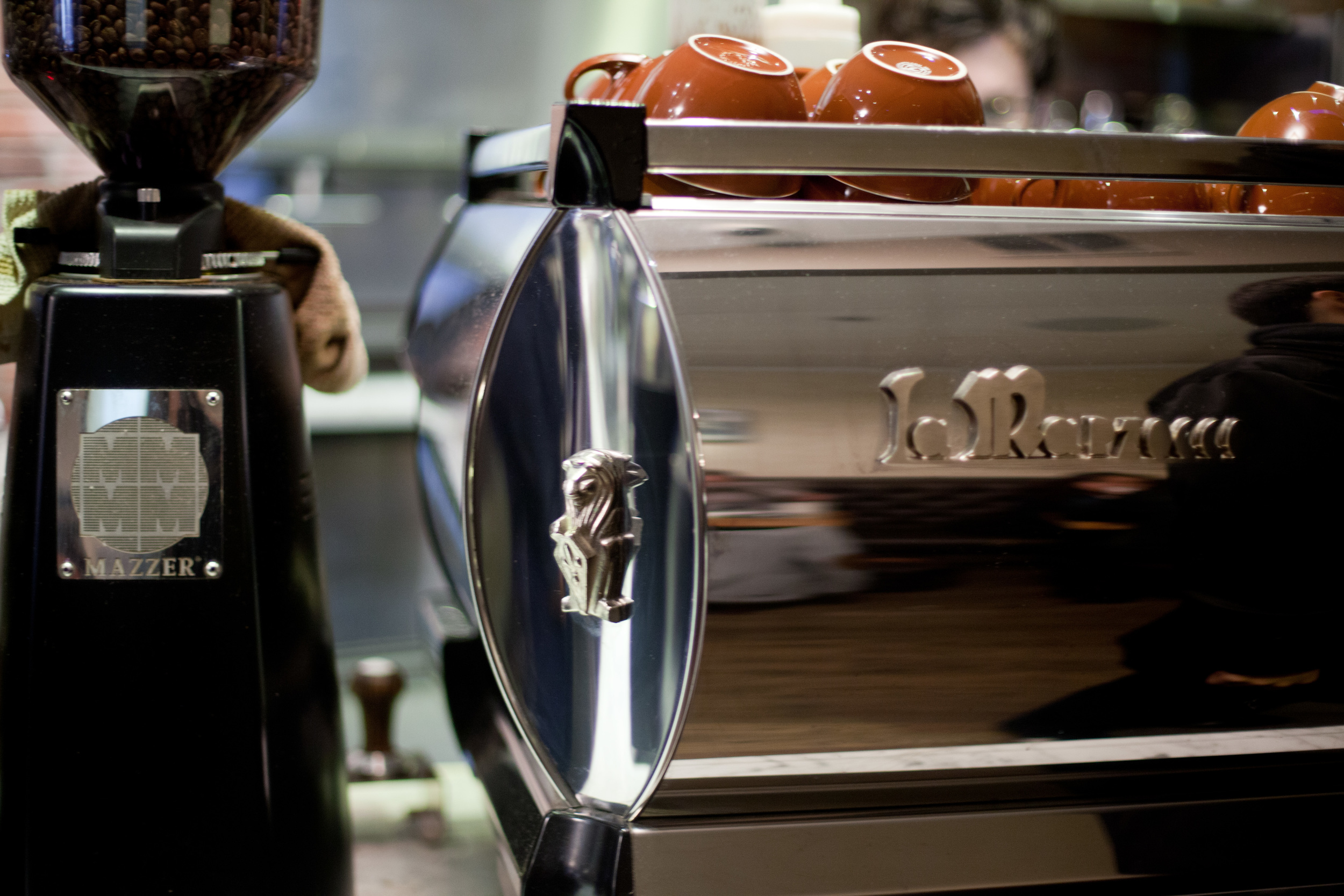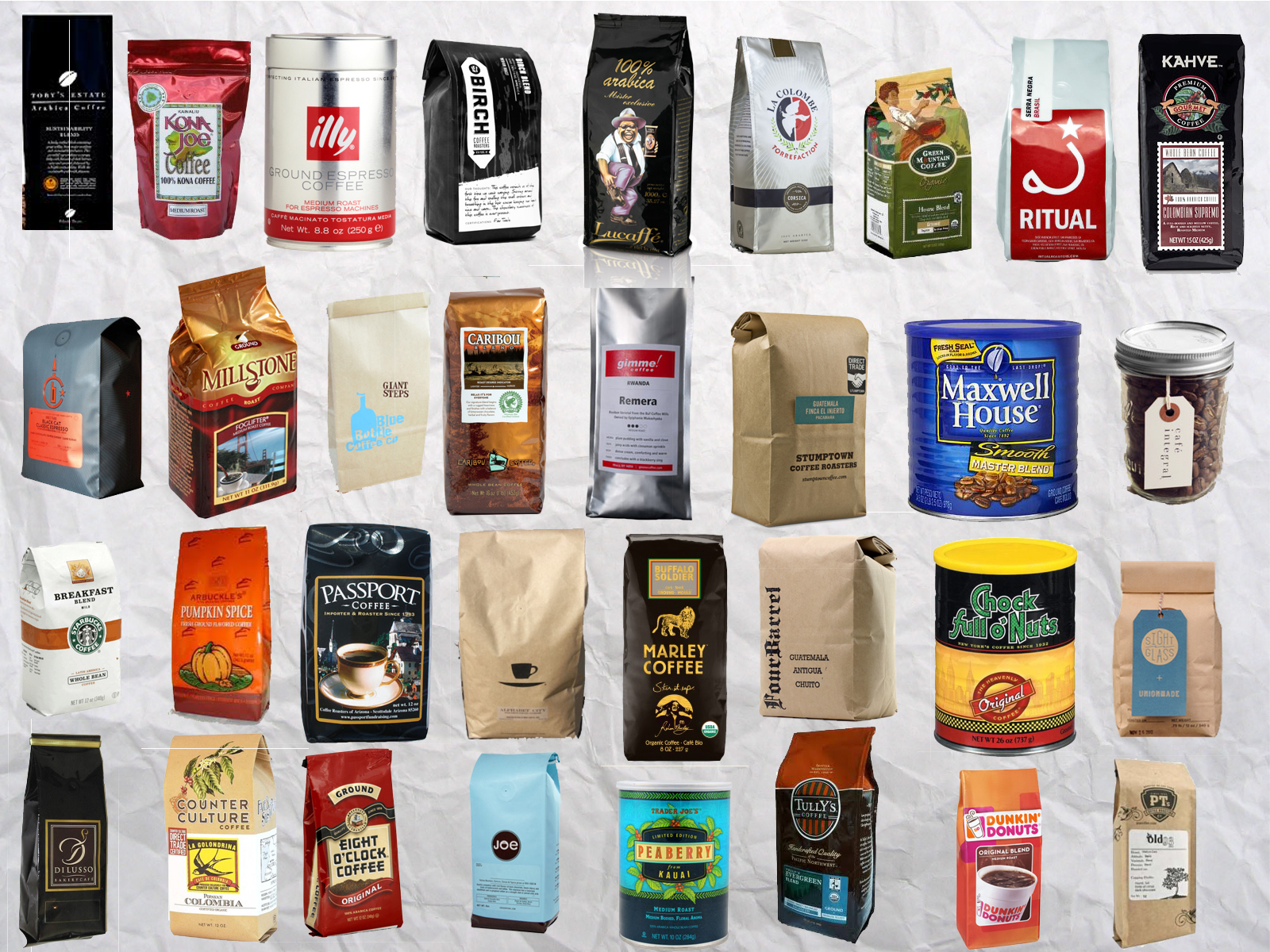This past weekend I had a chance to Visit the Thinking Cup, in Boston's South End.
Here are some photos. The thinking cup sells Stumptown Coffee as well as a large variety of Baked Goods, from Cakes to Biscotti. They have a La Marzocco/Mazer match up. Even better, they'll do a pour-over or a siphon of any of three Single Origins. When I went, they had the Sulawesi Toarco Peaberry, the Ethiopian Nano Challa and a Colombian. I thought my pour-over was quite good, but the espresso left something to be desired.
When I first started regularly visiting Boston, the coffee situation was pretty grim. In the last three years, however, it has gotten much better, to the point where I'm no longer bringing my own beans, grinder and French Press on every trip. The next step seems to be one of the Big three opening a roastery, or a Local company stepping up to the plate and taking a crack at Direct Trade.
-Adam
How to pick a good bag of coffee (without tasting it first).
I find myself often explaining to my fiancee why different aspects of coffee matter, and how, before I even open the bag, I can tell if a coffee will be good or not. Here's how.
Preamble
One fine day my fiancee called me a snob for not wanting to try a new coffee. To her mind, I was being closed minded and arrogant for thinking that I knew everything about the beans. In the end, I caved and tried the coffee. But to prove my point I did a blind, side-by-side comparison of the un-named coffee and a Blue Bottle ABS Finca La Florida SO. I was vindicated, but it got me thinking, how can you figure out if a coffee is good without trying it? The truth is, you can't. But there are definitely some indications that a coffee has the potential to be good. Here are the things to look for:
What to look for in a good bag
1. A respected roaster- The chances are, that if you are buying coffee from a roaster you respect, then you are probably getting a high quality product. The coffee may not be to your taste, exactly (for example, I usually don't care for Indonesian coffees) but it should be relatively free of flaws. This is the single easiest way to ensure you're buying a decent cup.
2. Roast date- Buy fresh coffee. Even more importantly, make sure that the package has the roast date labelled on it. I've had people try to tell me that roast date doesn't matter. When you hear that, turn around and leave, the chances aren't good that you'll get a cup worth remembering.
3. Whole Beans- I understand that not everybody has a grinder at home. Ideally, if this is the case, you should buy the whole bean bag, and then have the cafe, or supermarket or whatever grind it for you. If the packaging says "Ground" you're barking up the wrong tree. Coffee that is manufactured and ground right then and there may offer an okay cup, but it shows a lack of understanding about how truly exceptional coffee needs to be treated.
4. Terroir and Farm- Most coffee snobs have a preference for a region when it comes to coffee, but that isn't what this is about. If you only ever stuck to your wheel-house you would never get to try some of the amazing coffees that exist in the world. Check the packaging, and lacking that, ask the barista about the sourcing for the beans. If the barista doesn't know, and the package doesn't say, you are more likely to get an indifferently sourced coffee. Simply having the country, however is not enough. Because of the way that coffee is traditionally (i.e. not Direct Trade) sourced, country of origin alone will tell you little about the beans. Look for some indication of the farm, region or co-op the beans are from. Even better, look for some marking as to the wash and drying process. Attention to details like this on the part of the roaster are essential for a truly good cup. Even if you are buying a blend, which often won't have as much information about source, a good roaster will give some indications as to where the component coffees come from.
5. Cupping notes- These will at least let you know that the roaster has tried their coffee. If there are notes like "Pipe tobacco" or "tar" you may be looking at a nice way of saying "we roast the crap out of our poor beans or we buy muddy beans in the first place." That isn't always the case; sometimes a coffee is bold and earthy and isn't a bad thing.
What to avoid:
1. 100% Coffee- You would hope it would be. This is a way of saying "we don't know what's in here"
2. Robusto- For the most part, any coffee bragging of being a robusto is assuming ignorance on your part.
3. 100% Arabica- This is much more common. It is true that all the best coffees in the world come from this pant-leg as it were of the bifurcated species of coffee. But not all Arabica are created equally. You should look instead for a mention of varietal. Not all coffees will have it, but if they do, you're more likely to get a better cup. The varietal itself doesn't guarantee quality, but attention to details such as varietal imply a level of attention necessary for good beans.
4. Meaningless labeling- If a coffee is talking about the "joy of a simple cup" or the "fine tradition of Costa Rican coffee growing" they are wasting space where they could have been giving you information on what you're drinking. Often, this is due to a lack of knowledge on the roaster's part. Packaging should be informative, not trying to evoke a feeling. That is what the beans inside are for.
I can't guarantee that if you follow there guidelines you'll love all the coffee you ever buy, but you'll certainly be more likely to. Cheers and good hunting.
-Adam
Joyride gets La Colombe Samples
We had a sit down with La Colombe at while back, and they were kind enough to send us a huge number of samples.
These are just a few of them. La Colombe is a Philly based operation that has been around since 1994. They predate what is typically considered the "third-wave" of coffee and their model is different.
In terms of coffee, La Colombe has a two-tiered system. On the bottom they have their wildly popular blends, most of which have ethical accreditation. On the top, they have their answer to the Stumptowns, Intellegensias and Counter Cultures: The Workshop Series. These coffees focus on the origins of the coffees to a greater degree, and like the blends, have ethical accreditations (organic, fair trade, shade-grown etc). While the blends tend to be roasted quite darkly, these single-origins focus more on the lighter-side of La Colombe. They even have a robusto single-origin (sacrilege, I know). Finally, they sent us "Coffee Caramel" which is kind of like if coffee and nutella had a love-child with the most dangerous qualities of both. And like nutela, I've been eating it with a spoon in quantities far too great for my health. And like coffee, if you do that at 8pm you'll be up all night.
If you have a chance, I recommend checking out their cafe on Lafayette. The ambiance is great and the baristas well trained.
-Adam
The Good, the Bad and the Aeropress
The Aeropress has been gaining traction in the high-end coffee world since its introduction in 2005, with good reason. But it isn't all good news.
The method brews a quite unique cup, that melds the brightness and mouthfeel of an espresso with the texture and simplicity of a traditional drip. The system definitely has some brilliant elements, but I don't find myself using it, and instead returning to my typical prefered method, the chemex. The traits of the Aeropress make it the ultimate brew method for the road warrior; but for those of us with a more sedentary life style, it leaves an unquantifiable something missing.
The Good:
Light - The Aeropress weights almost nothing. Not important in most situations, but for travel: essential.
Quick - While not quite as fast as espresso, the Aeropress brews very quickly, somewhere in the 30-60 second range, roughly paralleling its hybridity between drip and espresso.
Unbreakable - Not quite. But close. Being made out of plastic certainly helps, but you can carelessly throw this in a bag for travel and arrive with a still functioning brewer, unlike a pour-over, chemex or French press.
Compact - The space required for a aerpress is about that of a 16oz beer can.
Makes Good Coffee - Getting good at brewing on an Aeropress is definetly easier than learning an espresso machine, and it makes a darn fine cup of coffee. They aren't used in cafes because of durability, after all.
Inexpensive - At $30, an Aeropress is an affordable brew method. Because it doesn't break, that $30 can last years, unlike the poor chemexes who keep dying in our offices (boiling water into a 40 degree chemex will break it, who knew?)
Neat - The "puck" system actually makes the Aeropress one of the neatest and cleanest brewing systems I've experienced. There is little mess, and at the end, the brewer just requires a quick rinse.
The Bad:
V1 - Despite working quite well, the Aeropress still feels like a brew method in its infancy. There are too many arguments about inversions for oils v. typical brewing, and the device doesn't quite answer the question of what it is supposed to do. The result is a brewer that hasn't quite worked out all of its kinks just yet. Some would call it versatility, but I am a believer that design should make its use obvious to the user and the Aeropress feesl a bit like it is trying to do everything for everybody.
Filters - Just about the only thing that prevents the Aerporess from being a perfect travel system is the need for specially designed, non-reusable filters. While the need for these is intrinsic to the system itself, their rather small distribution, and the relatively unkown nature of the press, means that you can either order them online, or get them at a specialty store.
SingleCup - The Aeropress, like many popular brewers, makes only a single cup. A big part of coffee for me is the conversation, and the chance to socialize that comes with it. The Aerorpess is and feels like the private possesion of a coffee nerd, it isn't something you could break out at lunch with your grandma, the way a frenchpress or chemex can span the gap between nerd and the creamer-crowd.
NotEspresso - It is a little obnoxious to compare a $30 brewer to a $3000 machine that requires an electrician and a plumber to install. But that is what the aeropress is aiming for. It is a bold effort, and while they capture much of the essence of espresso, the lack of pressure leads to a cup that brings espresso to mind, but which does not fill the same hole in your soul. Sometimes espresso is sublime, and maybe it is my brewing, but I just don't think the Aeropress is up to the challenge. I think I would like it better if it were trying to do its own thing, but espresso, but it's not.
Tough to Learn - While the Aeropress doesn't require the same amount of experience to use properly as say an Espresso machine, the element of pressure requires a steady and skilled hand to use properly. While elements like water weight and grind can be quantified and squared away, manually applied pressure is much more difficult to gauge, and is difficult to deliver consistently from brew to brew.
Obviously, my complaints are nit-picky, and generally speaking the Aeropress is a significant addition to a barista's arsenal. In its own way, as a specialized tool used by a experienced user, it can deliver an amazing cup of coffee. But it isn't for me. I love espresso, and I love drip, but for different reasons. Aeropress fills the gap between the two, but it doesn't really do either quite the way I would like.
Coffee Hack: How to Filter with a French Press
Sometimes you have coffee ground for the wrong setting. How do you fix it?
Last night at our family's Thanksgiving Dinner, we came across a problem. My sister has a French press, but we brought coffee ground for drip. How do you deal??? Like this:
The Coffee Hack: Brewing Drip Ground Coffee on a French Press
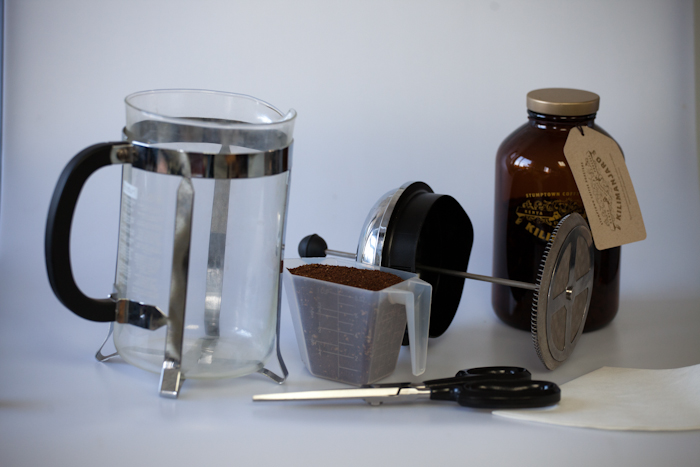
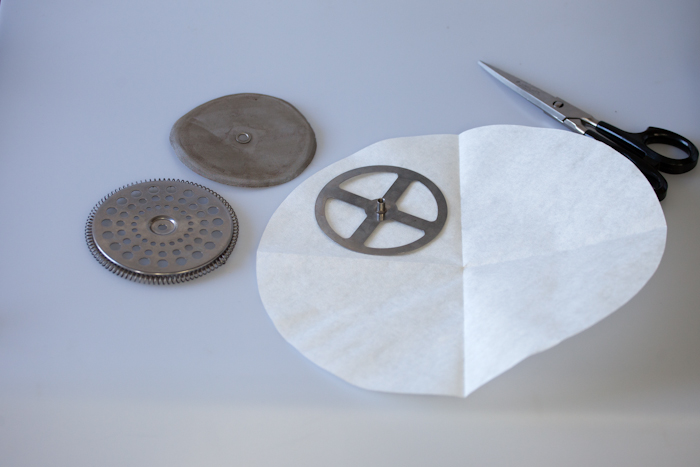
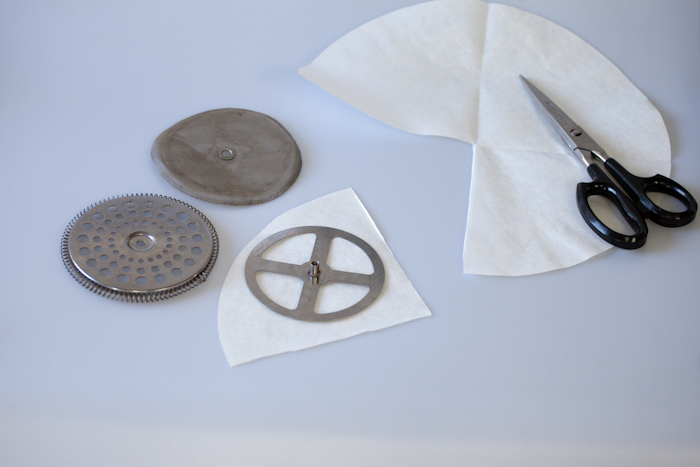

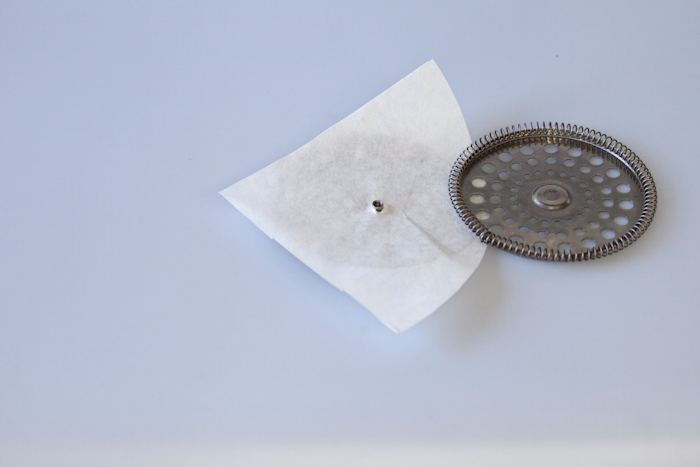
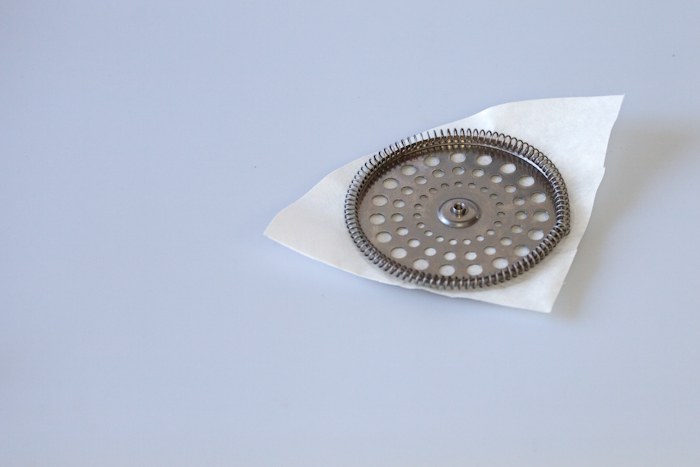
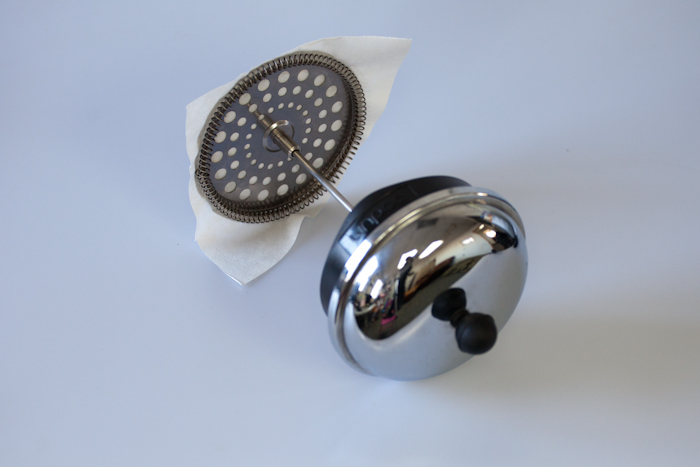

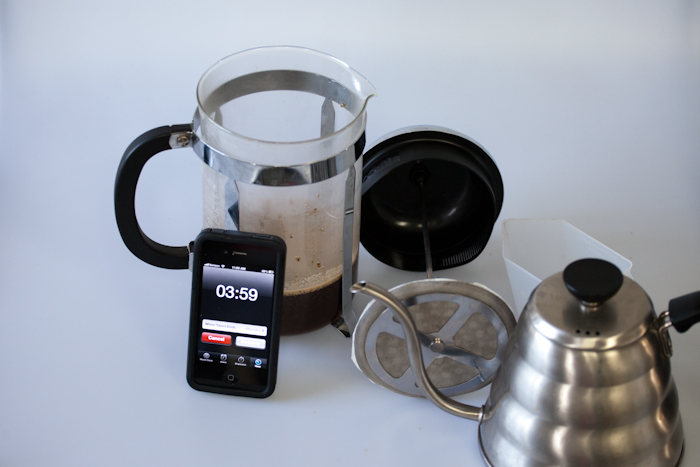
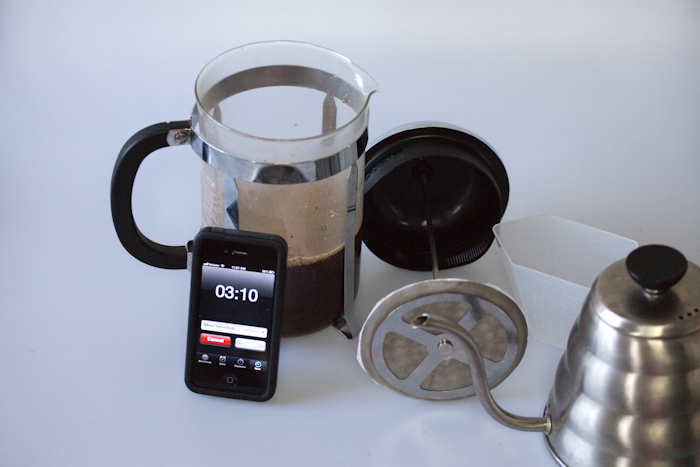
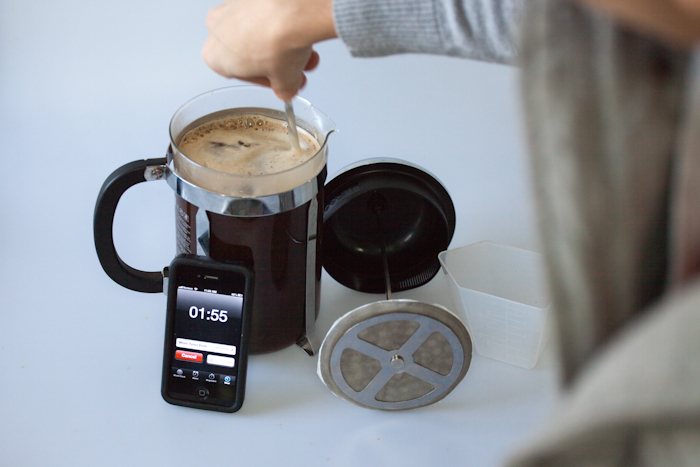
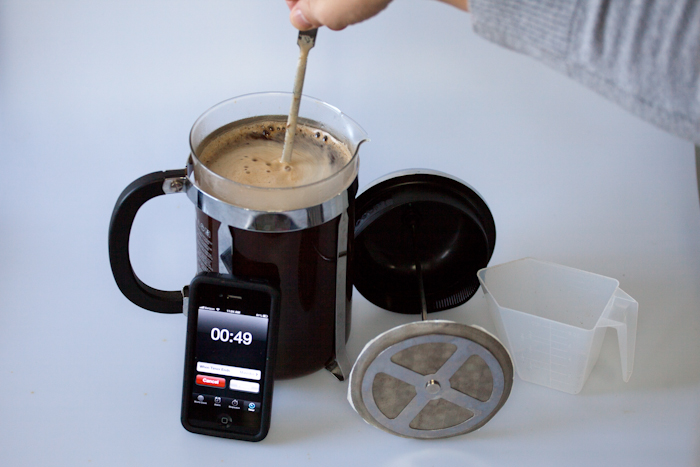
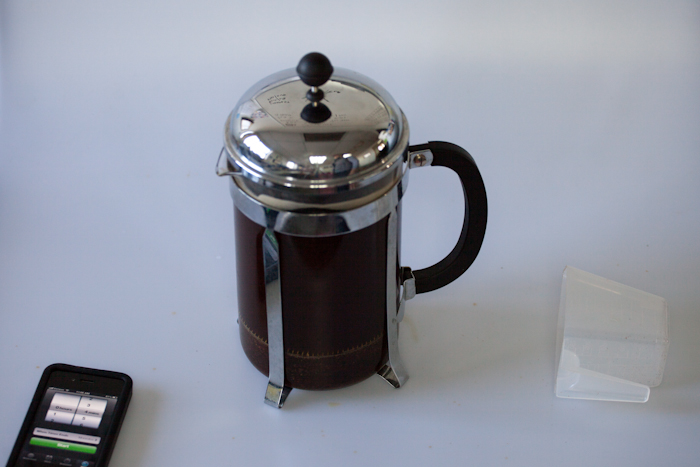

The filter we used is for a chemex, but any filter would really do. Remeber to pre-wet the filter, though to get any taste out of it prior to pressing. The mechanism used to hold the fine screen in the Bodum french press is perfectly designed to hold a filter in a similar situation.
In terms of brewing with the finner grind, the single biggest difference is that you need to stir more often. Coffee ground for french-press has more carbon dioxide caught in the larger granuals, while coffee ground for drip allows most of the carbon-dioxide to escape. As a result, coarsely ground coffee floats, while more finely ground coffee sinks. To avoid a problem where there is simply sedement sitting at the bottom of the press, over extracting into a small amount of water while under extracting into the rest, you need to stir the coffee every minute during the four minute brew cycle.
One thing worth keeping in mind is that pressing the pot at the end of the brew requires more force and patience than normal. You are pushing the water through a finer filter, that is clogged with finner particulate. Additionally, unless you are preternaturally skilled at trimming filters, you end up with some in-between the the coil and the glass. Just keep patiently pressing. If the going gets stuck, pull up a bit before continuing on the downard trajectory. The cup itself comes out splendidly. It certainly has the finer sediment you expect from a french press, but it doesn't have the larger sediment that the screen allows, and therefore lacks some of the body of a normal french press. If you do it correctly, however, the cup should be amazing and should reflect the beans well. In terms of taste, I would say the cup lies somewhere between french-press and a chemex, leaning more toward the french press.
If you have other coffee hacks, let me know! We'd be happy to share them with the world.
-Adam
Coffee Porter - A Killer Combo
While doing some Thanksgiving shopping at Fairway, I came across this coffee-beer and couldn't resist giving it a try.
It's called "Alta Gracia Coffee Porter" and is brewed by Wolaver's using coffee originating in the Dominican Republic and roasted by Vermont Coffee Company.
While I'm usually a purist in both my beer and coffee tastes, I have to admit this hybrid was quite delightful. The presence of coffee is immediately apparent in the aroma. On the palate, its contribution comes through the chocolatey undertone it imparts to this Vermont porter.
Surprising tasty, Wolaver's Coffee Porter leads me to wonder what other successful coffee-beer combinations could be possible; perhaps an African coffee used to enhance a wheat beer. Imagine a Blue Moon, where the citrus is not from an orange peel, but rather a dry processed Yirgacheffe.
Finally, in gather the links for this post, I learned that Wolaver's is brewed in Middlebury, Vermot, home to my (David) Alma mater, Middlebury College. I'm liking this beer and this brewery even more now. And even more after learning that Middlebury Spanish Professor, Julia Alvarez is the founder of this community supporting coffee farm. According to the Vermont Coffee Company, which has been importing from this farm for nine years, "All the proceeds of the Alta Gracia coffee sales are returned to the community through the fair trade prices we pay, the support we [The Vermont Coffee Company] provide for a community literacy program and teacher, and our donations that fund a sustainable agriculture volunteer."
See below for more info on the brewery and the beer or click here for a page dedicated this Vermont Coffee Company/Wolaver's collaboration, which according to the former's website "is the result of a fantastic collaboration of farmer, roaster, and brewer – all with strong Vermont ties."
Wolaver's Fine Organic Ales: About: 100% Organic Hops and Malts Mission: Our brewery is dedicated to brewing great tasting beers, supporting sustainable agriculture, and minimizing our impact on the environment. Company Overview: Brewers of the nation's first certified organic beers.
Wolaver's Alta Gracia Coffee Porter: Alta Gracia Coffee Porter 5% Wolaver’s Alta Gracia™ Coffee Porter is made in cooperation with the Vermont Coffee Company using 100% certified fair trade, organic coffee from the Alta Gracia farm in the Dominican Republic. Alta Gracia™ Coffee Porter is an exceptionally smooth and flavorfully complex beer that is surprisingly true to the porter style. hint of vanilla brings out the sweetness of the dark-roasted Dominican coffee.


Holiday Coffee Done Right in 7 Steps
Ho Ho Ho and a cup of Joe. Now I'm not sure how many people come to Thanksgiving Dinner with your family, but at mine, they are numerous. Everybody from my 93 year old grandfather to my one year old nephew will be there with a good two dozen people in between. Finding a good coffee solution for a big group can be daunting. Here are some tips on how to intelligently integrate your caffeine addiction into the festivities while keeping everybody happy.
1. Drink Coffee the Morning Of: If you are a regular coffee drinker, neglecting your morning cup is going to give you a headache on an already stressful day. I like to use an artisinal brew method such as a pour-over or (if you have a partner) a chemex. The ritual of brewing coffee is calming and helps to collect your thoughts, all while giving you your daily dose of caffeine.
2. Don't drink coffee all day: I know that if I am very busy, I will just keep drinking coffee all day. This is a mistake. Over caffeinating is easy to do when your mind is on other things, like stuffing a turkey. Keep in mind that caffeine has a halflife in the human body of about 8 hrs, so as a rule of thumb, I try to stop drinking coffee by about 8hrs before I plan to go to bed. There is nothing worse than laying in bed, ridiculously full and unable to sleep because you drank twelve cups of coffee while basting your bird.
3. Have decaf available: For me, decaf is a bit of a joke. But everybody has a caffeine sensitive Aunt Gertie who will just get a massive sour-puss if you don't give her the cup she wants. Having a bit of decaf on hand is a great idea. Furthemore, most people who drink decaf, usually aren't connoisseurs so (this is a bit mean) you can hold onto decaf beans a bit longer and they probably won't notice. That one bag can probably last you from Thanksgiving through Christmas, Haunkaha, Kwanza, Festivus or whatever solstice-time festivities you celebrate.
4. Use Coffee in dessert recipes: Coffee has a subtle and amazing flavor that pairs well with citrus, apples, and chocolate to name just a few. Folded into a chocolate cake, it can balance out sweetness, and add layers of flavor to a desert. When mixed into brownies, it can add a layer of flavor, that is sublime when served ala mode.
5. Brewing for the After Dinner rush with French Press: For me, the best way to deal with the after dinner rush is with one (or two!) Frenchpresses. In the cold times of the year a thickly-bodied cup offers a great, comforting appeal. Furthermore, it takes about 4 minutes to make a darn good cup of coffee! They are available in all sizes, so it is possible to do coffee for 20 in 4 minutes using two 12-cup Frenchpresses. Additionally, as a brew method, the French Press is more forgiving than the often finiky pour-over methods, so if you get distracted talking to your slightly tipsy brother-in-law about the Giants, less harm done. With fresh beans, grinding before brewing and decanting after you press, the french-press can make an amazing cup of coffee, while forgiving the almost inevitable distraction.
6. Pairing Bourbon with coffee: Irish coffee is a bit obvious. But bourbon too makes a great accompaniment to a cup of coffee. Buying a single bottle can turn dessert into something the sweet-adverse drool over.
7. Coffee beans make good gifts: Amazing quality coffee beans are an affordable way to give people something special, without burdening them with a Brookstone scalp massager/martini shaker. Nobody likes those. Coffee, on the other hand, is enjoyed and then it's gone, freeing their tiny NYC closets for the terrible gifts other people give them. If you want to give a more significant gift, a nice coffee, paired with say, a Chemex, ilters, a Breville Hot water heater and a Hario kettle, gives people an amazing setup with amazing design to boot.
Have a happy (and well caffeinated) holiday season!
-Adam




